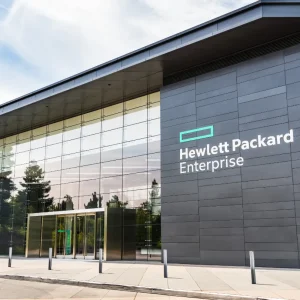
The telecoms industry has seen a strong push towards moving providers to the cloud with the use of open-source technologies at this year’s the Mobile World Congress (MWC).
Huawei has unveiled a cloud data centre for carriers looking to move into cloud-based service provisioning. The open ecosystem was built in partnership with SAP, Accenture and other partners.
SAP’s technology will be used to help with cloud migrations, while Accenture will enable the development of private cloud applications.
Huawei said that the "application centric, cloud 3.0 data centre" combines mission-critical server, storage consolidation, Cloud Fabric SDN, modular data centre, and other IT solutions into one cloud data centre platform.
Telcos can run unified resource management, elastic expansion, convergence, and visualised operations and maintenance (O&M) in services, operations, infrastructures, and networks at their data centres.
The Huawei Cloud Data Centre uses public and private clouds platforms, supports the deployment of multiple clouds, fully stackable public clouds, and cross-cloud service migration.
Huawei said that the cloud data centre is able to ‘smash the silo-like structure of conventional IT and empower carriers with more choices in their cloud transformations. With the revitalised deployment strategies, telcos become strategically positioned as enablers of the digital economy."
Zheng Yelai, president of Huawei IT product line, said: "Through continuous innovations and the results of focused efforts with our partners, we are building clouds that benefit carriers the most – clouds featuring shortened service provisioning, reduced OPEX, and automated O&M.
"These improvements allow carriers to develop new business in public cloud and effectuate their transformations."
Also at MWC, Red Hat unveiled that customer experience provider Amdocs, has integrated the Red Hat Enterprise Linux OpenStack Platform with the Amdocs Network Cloud Service Orchestrator (ANCSO).
The ANCSO is an open, vendor-agnostic, catalogue-driven solution designed to help communications service providers (CSPs) transition from physical networks to cloud service environments.
By combining the two platforms into an open-source based solution, the companies expect to create a software-led environment that allows telecommunications services to be managed more easily.
The solution has been designed to address market needs by speeding up the deployment of communications sequential processes (CPS) to introduce new services.
According to Red Hat, CSPs can more rapidly deploy virtual network functions (VNFs) from different vendors across their service catalogue and evolve towards running multi-vendor, multi-operation, end-to-end services for customers.
Radhesh Balakrishnan, GM of OpenStack at Red Hat, said that OpenStack has now become a "de facto lingua franca for NFV trials across the globe".
Ann Hatchell, head of marketing for network at Amdocs, said: "Using software automation and orchestration, CSPs can accelerate service agility with operational efficiencies and speed of innovation.
"Open solutions, such as Red Hat Enterprise Linux OpenStack Platform, also accelerate innovation, by addressing the challenges of vendor lock-in."
Also in the cloud space at MWC, Ericsson and AWS have formed an alliance that places Ericsson as a "bridge for its telecom operator customers to use public cloud services", according to Reuters.
With the agreement, Ericsson is trying to push for telecommunications service providers to adopt cloud services.
The company will be providing the software while AWS will make its cloud services available. Ericsson also said it is creating a global team of AWS Cloud experts.
The first customer of the alliance will be Telstra. No financial terms have been disclosed.






